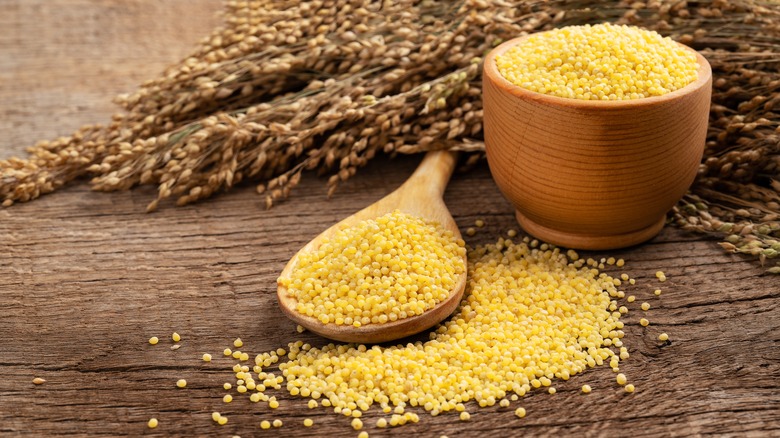Millets Are Having A Moment, But What Exactly Are They?
The Food and Agriculture Organization of the United Nations General Assembly reported that 2023 has been declared the International Year of Millets. You may not have heard of millets, but they are well-known all over the world and have been quickly gaining popularity in the U.S. for many reasons. So what exactly are millets, and why are they trending now?
Millets are small-seeded grasses that have been cultivated and eaten for thousands of years. They are believed to have originated in Asia over 4,000 years ago and later spread to other parts of the world, including Africa and Europe. They have been used as food crops in many parts of the globe for centuries, acting as a staple food in various countries because they can grow where other crops often struggle to survive. Millet recipes are gaining popularity right now because more people are becoming aware of the health benefits, environmental advantages, and versatility of these little grains, so there's an increasing demand for them.
The mighty millet
Millet is nutritious and a naturally gluten-free food, making it an excellent alternative for people who need to avoid gluten but still want to have nutrient-rich grains in their diets. Millets are highly nutritious and rich in fiber and antioxidants. They contain iron, potassium, vitamin B, and many other vitamins and minerals. They are also low in fat and high in protein, making them a healthy alternative to other grains.
Millets require less water and fertilizer than other crops, so they're a solid option for sustainable agriculture. They come in different varieties, including finger millet, pearl millet, and foxtail millet, among many others. The grain is extremely versatile and can be used in a variety of dishes. Millets are fairly easy to prepare, and most varieties cook in less than an hour, so they can be a great option for a quick, healthy weeknight dinner. One downfall, though, is that millet may not be as readily available as other grains, like rice or wheat, in mainstream supermarkets. However, you can order it online.
How to eat millets
Millets can be consumed in a variety of ways, depending on the type you choose and your personal preferences. They can be eaten uncooked as a topping to yogurt or salads, or they can be cooked in water or milk to make a porridge-like dish, which can be flavored with various sweet or savory ingredients, such as fruits, nuts, honey, and vegetables. They can also be used as a base for salads, or ground into flour and used to make bread and other baked goods. Millets can be added to soups and stews, or they can be roasted, popped, or made into snack bars.
The taste varies depending on the type of millet, but most have a nutty or earthy flavor, similar to quinoa or couscous. Overall, they have a pleasant and mild taste, and they can absorb the flavors of other ingredients, making them an ideal addition to almost any dish. The different types have different textures and cooking times, so you should first choose the right type of millet for your meal goals. Then, follow the instructions on the packaging or the recipe you're using to ensure that they are cooked properly.


